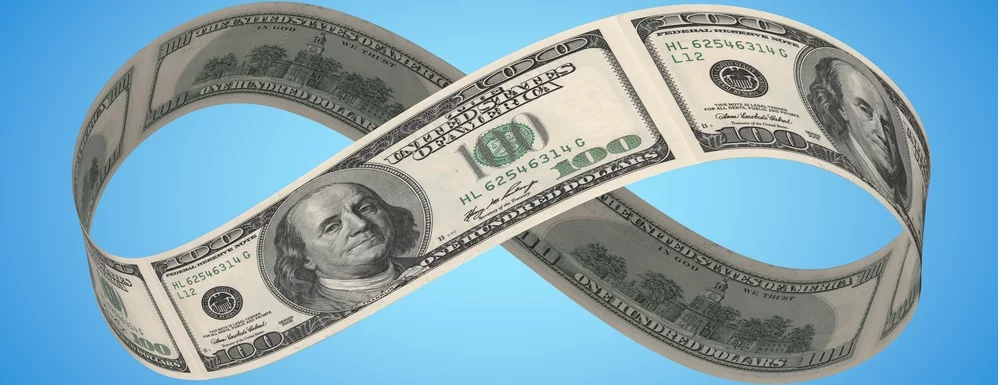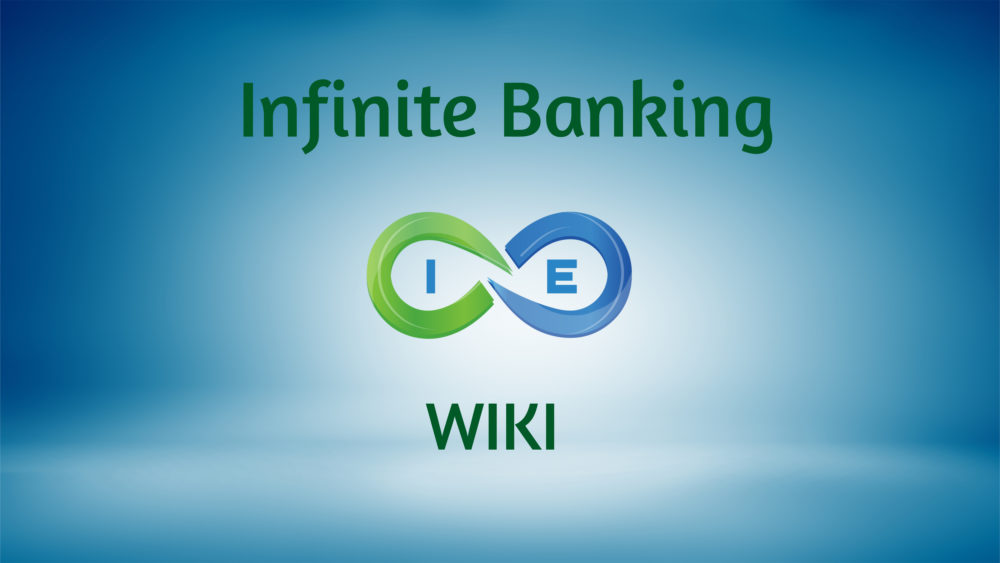All Categories
Featured
Table of Contents
Okay, to be reasonable you're truly "financial with an insurer" as opposed to "financial on yourself", but that principle is not as easy to sell. Why the term "boundless" financial? The concept is to have your cash operating in multiple places at once, instead than in a solitary place. It's a bit like the concept of getting a house with cash money, after that borrowing against your house and placing the cash to work in another investment.
Some people like to talk about the "velocity of money", which generally indicates the very same point. That does not suggest there is absolutely nothing rewarding to this principle once you get past the advertising.
The entire life insurance policy sector is pestered by overly pricey insurance policy, large commissions, dubious sales techniques, reduced rates of return, and badly informed customers and salesmen. If you want to "Bank on Yourself", you're going to have to wade right into this sector and in fact purchase entire life insurance. There is no substitute.
The assurances inherent in this product are essential to its feature. You can obtain versus many types of money worth life insurance coverage, however you should not "financial institution" with them. As you buy an entire life insurance policy plan to "bank" with, keep in mind that this is an entirely separate area of your financial plan from the life insurance policy area.
As you will see below, your "Infinite Banking" plan truly is not going to dependably supply this crucial monetary function. Another trouble with the truth that IB/BOY/LEAP depends, at its core, on an entire life policy is that it can make buying a plan troublesome for many of those interested in doing so.
What Is Infinite Banking Concept
Dangerous hobbies such as diving, rock climbing, sky diving, or flying additionally do not mix well with life insurance coverage items. The IB/BOY/LEAP advocates (salesmen?) have a workaround for youbuy the policy on a person else! That may work out fine, because the factor of the plan is not the death benefit, yet remember that buying a plan on small youngsters is extra costly than it should be because they are normally underwritten at a "common" rate as opposed to a chosen one.

Most policies are structured to do a couple of points. Most commonly, plans are structured to maximize the payment to the agent offering it. Cynical? Yes. It's the reality. The commission on a whole life insurance policy policy is 50-110% of the very first year's premium. In some cases plans are structured to make best use of the survivor benefit for the costs paid.
The rate of return on the plan is really important. One of the finest methods to maximize that variable is to get as much cash money as feasible right into the plan.
The very best means to improve the rate of return of a policy is to have a reasonably small "base policy", and afterwards placed more money into it with "paid-up enhancements". Rather of asking "Just how little can I place in to obtain a particular death advantage?" the inquiry becomes "Just how a lot can I lawfully placed right into the plan?" With more cash in the plan, there is more money worth left after the costs of the survivor benefit are paid.
A fringe benefit of a paid-up addition over a regular premium is that the payment rate is lower (like 3-4% rather than 50-110%) on paid-up additions than the base plan. The much less you pay in payment, the higher your price of return. The rate of return on your cash value is still going to be adverse for some time, like all cash money worth insurance coverage.
It is not interest-free. In truth, it might cost as much as 8%. The majority of insurance provider just supply "straight recognition" finances. With a straight recognition funding, if you borrow out $50K, the reward rate applied to the cash money worth each year just puts on the $150K left in the plan.
Borderlands 2 Infinite Bank Space Glitch
With a non-direct acknowledgment financing, the firm still pays the same reward, whether you have "borrowed the cash out" (technically against) the policy or not. Crazy, right? Why would they do that? Who recognizes? They do. Usually this function is coupled with some much less beneficial element of the plan, such as a lower returns rate than you might obtain from a plan with straight acknowledgment finances (dave ramsey infinite banking concept).
The firms do not have a resource of magic cost-free money, so what they offer in one area in the policy have to be taken from another area. If it is taken from a function you care less about and place into a function you care much more about, that is an excellent thing for you.
There is one even more vital function, usually called "laundry fundings". While it is terrific to still have dividends paid on money you have secured of the policy, you still need to pay passion on that particular car loan. If the returns price is 4% and the car loan is billing 8%, you're not exactly coming out in advance.
With a clean finance, your car loan rate of interest coincides as the dividend price on the policy. While you are paying 5% passion on the financing, that passion is totally countered by the 5% returns on the lending. In that respect, it acts just like you took out the money from a financial institution account.

5%-5% = 0%-0%. Same exact same. Thus, you are currently "banking on yourself." Without all three of these aspects, this policy simply is not going to function quite possibly for IB/BOY/LEAP. The largest issue with IB/BOY/LEAP is individuals pushing it. Almost all of them stand to benefit from you purchasing into this concept.
There are several insurance coverage agents talking concerning IB/BOY/LEAP as a feature of entire life that are not really marketing plans with the necessary features to do it! The issue is that those who understand the principle best have a large dispute of passion and normally inflate the advantages of the idea (and the underlying plan).
Allan Roth Bank On Yourself
You ought to compare loaning against your plan to taking out money from your financial savings account. No cash in cash money value life insurance. You can place the money in the bank, you can invest it, or you can buy an IB/BOY/LEAP plan.
It expands as the account pays passion. You pay tax obligations on the passion annually. When it comes time to buy the watercraft, you take out the money and buy the boat. Then you can conserve some more money and placed it back in the financial account to start to gain interest again.
It expands over the years with capital gains, returns, leas, etc. Several of that income is taxed as you go along. When it comes time to get the watercraft, you market the financial investment and pay tax obligations on your long-term funding gains. Then you can save some more money and buy some more financial investments.
The cash worth not utilized to spend for insurance coverage and payments grows for many years at the dividend rate without tax drag. It begins with adverse returns, but ideally by year 5 or so has damaged even and is growing at the returns rate. When you most likely to acquire the watercraft, you obtain against the plan tax-free.
Infinite Banking Testimonials
As you pay it back, the cash you repaid starts growing once again at the returns price. Those all job quite likewise and you can contrast the after-tax prices of return. The fourth option, nevertheless, functions extremely in different ways. You do not save any type of money nor purchase any kind of type of financial investment for several years.
They run your credit rating and give you a funding. You pay passion on the borrowed cash to the financial institution till the car loan is paid off.
Latest Posts
Infinite Insurance And Financial Services
Infinite Banking Concept Calculator
Create Your Own Banking System